
Perched high on the crest of a sand ridge, the rising sun cast my elongated shadow to the west, which dissipated like a heat-induced mirage in the thick clumps of spinifex below. Beyond was another sand ridge, then 100 more until the most distant collided with a waning dawn sky.
Three hundred kilometres farther lay Old Andado Station, our next objective. I breathed in deeply and closed my eyes, letting the crisp air fill my lungs as I mentally prepared for the day ahead. Opening my eyes, I scanned the horizon for a hint of an existing track; any that did exist had been expunged by the wind since the last vehicle crossed this region 50 years ago.

In the valley to the east, my crew pulled a billy from the coals, prepared the last cuppa joe, and stowed gear. Sliding down the ridge to my Jeep, I pulled a whiskey compass from my pocket, pointed the needle due west, and turned the key. We needed to cover 50km before sunset, and it would be a long day.
The previous year I’d met with Ben Davidson, publisher of Jeep Action Magazine, in Las Vegas. He shared that, in 1969, a man by the name of Ian McDonald rounded up a group of friends and three Jeep Overlanders and set out to not only cross the continent from coast-to-coast, but also attempt a transect of the northern Simpson Desert – one of the country’s most remote and inhospitable regions. He also mentioned that McDonald and the expedition’s filmmaker John Eggleston were still alive and might be interested in one last hurrah.
There are few topics that pique the adventurer’s imagination like venturing into a place where few have trod. Positioning such an endeavour on the must-do list was the possibility of travelling with these living legends of the Outback.
We began working on logistics and reached out to companies such as BFGoodrich, Jeep, TeraFlex, Bestop and Warn Industries to see if they shared our dream … they gave us an immediate two-thumbs-up. Enter the BFGoodrich East-West Australia Jeep Expedition.
Peaceful Oceans and Kudamuckra
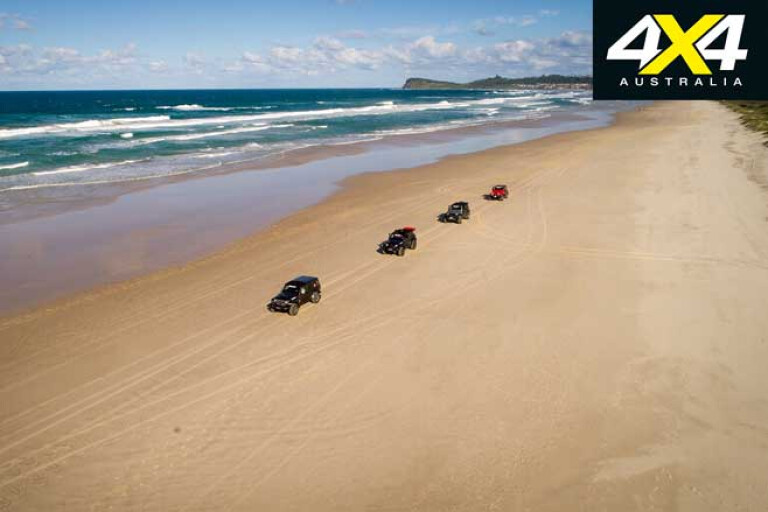
Months later we were chasing an incoming tide on a beach near Cape Byron, the easternmost point of the Australian continent and where McDonald’s team began their journey. Five thousand kilometres to the west, an angry sea crashed against the precipitous shoreline at Steep Point, the most western promontory.
Our journey would be more than simply covering ground; it would be a tribute to the ethos of yesteryear and the honouring of tradition. We had been granted copies of the original journals and committed ourselves to being disciples of lore. McDonald’s crew thought it important to take water from the Pacific Ocean and, if successful in their quest, sprinkle it into the Indian Ocean. We waded into the surf to collect our specimens, humbly requested permission from Neptune, and corked a few bottles of Pacific goodness.

Ian and John, both spry octogenarians, joined the team in Brisbane and were a natural fit. They were excited, energetic and akin to a pair of walking encyclopedias with regard to the region’s natural and cultural history. Sitting around our first campfire, we queried John about his journal reference to a giant serpent. “Kudamuckra!” he said as his eyes dilated to the size of hen’s eggs. He went on to explain an encounter in Birdsville.
“We received a visit from one of the elders of the local Aboriginal tribe and he did his best to talk us out of going into the desert. He explained it was inhabited by a dreamtime serpent called the Kudamuckra, and if we entered it would certainly destroy us. He said we must collect the leaves of a coolabah tree, burn them in our last campfire before we enter the desert, collect the ash, and carry it with us. Then the Kudamuckra might leave us alone.” Dead silence spread through the group, but you know damn sure we Googled coolabah tree and collected some leaves the next morning.
Big Red and the Geocentre
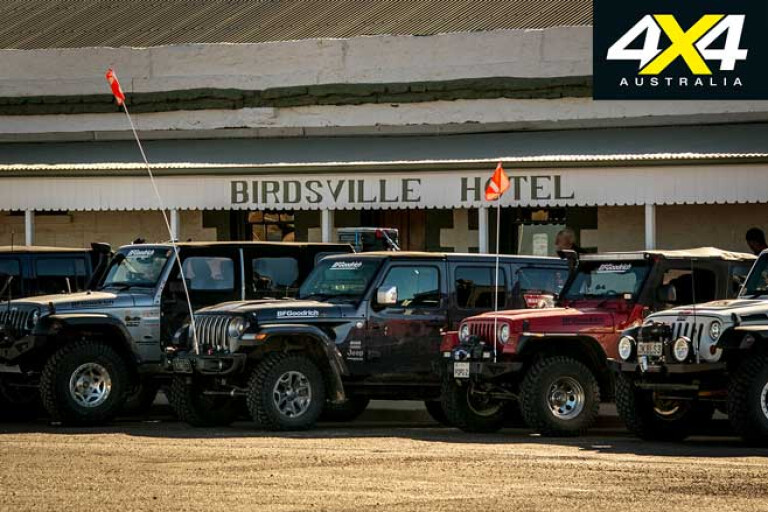
Birdsville, population 140, is placed at the end of the road and squarely in the middle of nowhere – the pavement ended some 800km short of town. Despite its diminutive size, the township has become a destination the world over.
Established in the late 1800s as a toll station for stock routes, it nearly vanished when the new railroad was completed. However, it has reinvented itself with the creation of the Birdsville Races (which attract 9000 spectators) and the Big Red Bash, a music festival at the base of the region’s tallest sand dune.
It is also the launching point for the Simpson Desert, and with fuel prices running $1.75/litre, one could say it still collects a healthy toll to pass. We settled in for tucker and a round of coldies at the iconic Birdsville Hotel (circa 1884), restocked supplies, and sorted out a fuel dump.
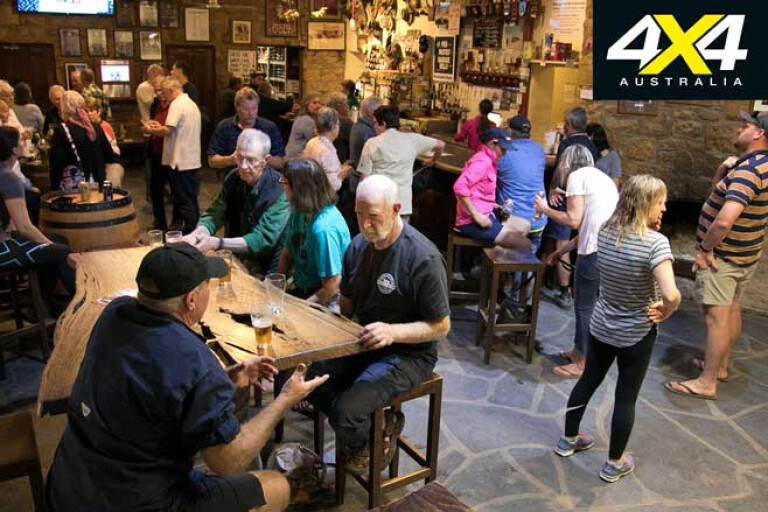
Most of our Jeeps were fitted with auxiliary fuel cells from Long Range Automotive, but the 900km of sand driving to get to the next servo would require a top-off. This was a job for Dave “Emu” Parkinson, legendary bushman of the Outback. Tall, broad and with the no-bull personality mix of Clint Eastwood and Rodney Dangerfield, he sauntered into the pub like Indiana Jones in the Temple of Doom.
We calculated fuel needs and agreed on a meet point 85 clicks up the Colson Track, one of only two that intersected our 300km transect from the abandoned oil well at Beachcomber to Old Andado.
While most travellers to the Simpson Desert follow the QAA and French Line tracks, and usually begin in the west to avoid the steep side of the dunes, our east-to-west route was through Aboriginal lands accessed only by permit. Ben Davidson had arranged permission with the local authority, and with paperwork in-hand we headed for Big Red, the first of more than 1000 dunes that lay ahead.

It was a school holiday week, and oncoming traffic was heavy as we made our way like salmon swimming upstream across the QAA to Eyre Creek, which was at flood stage. We reluctantly took the compulsory detour, which burned 40km worth of precious fuel we would dearly need in the coming days.
A few campfires later we had escaped the throngs of sightseers and were positioned at the edge of a void, a sea of white space on the map accented only by a thousand ochre lines running north and south.
A set of tracks led us over the first dune, and then the second, and I thought, “crap, did someone beat us to the punch?” The tracks ended on the third ridge, where the interlopers had bailed and headed for the barn. We would see few signs of human existence from this point on.
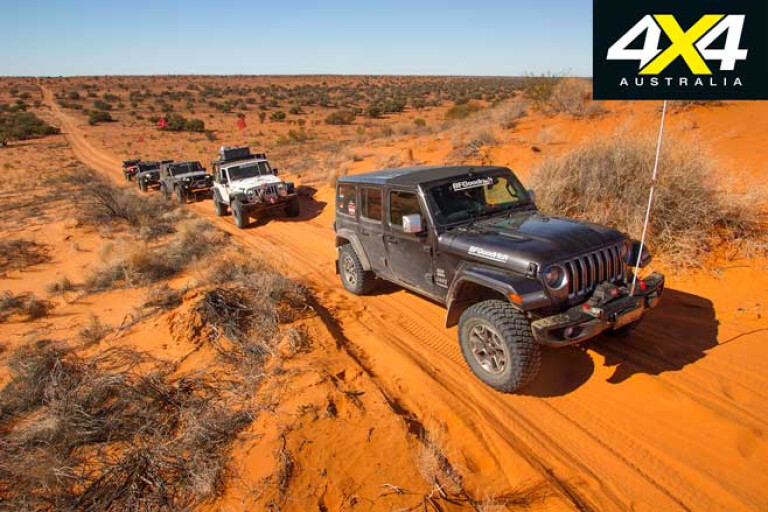
Threading our way through thick clumps of spinifex and tyre-shredding Mulga stumps, we maintained a westerly course toward the Simpson’s geographical centre. John jumped out to do a foot recce of the first few ridges, as was needed during their 1969 trip. But after our fleet made short work of the first dozen he said, “I just can’t believe how capable these new Jeeps are. We had to use sand ladders on almost every ridge. And these tyres (KM3s), they float over sand that would have buried us.”
There was a bit of a competition as to whom Ian and John would ride with each day. Their tales of the past and knowledge of the desert entertained all who listened. When I asked Ian, who is a bit of a firecracker, how much fuel they carried he replied, “As much as we could f…ing carry.”
One night around the fire, John had everyone in stitches as he shared an account of his filmmaking days – the brief summary is that his team captured a whale, shoehorned it into a DC3 and flew it to its new home – and yes, it was alive and flipping through the process.
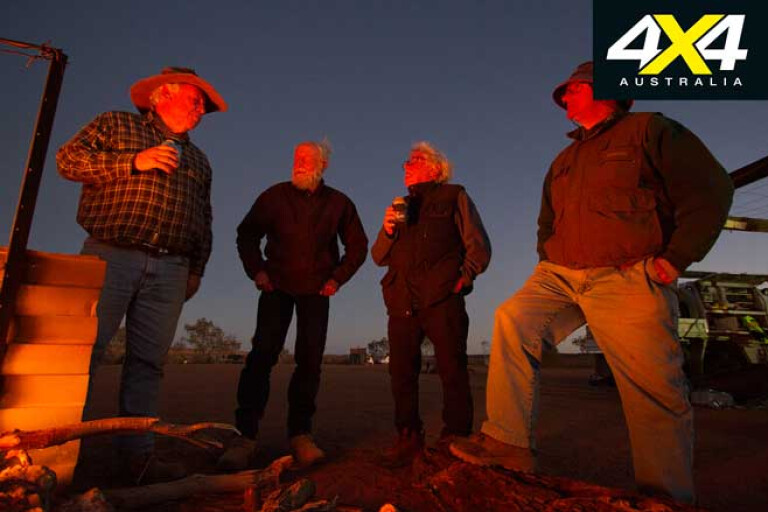
Reaching the Simpson’s geographical centre prompted a moment of pause and celebration, but the days had been long and seemed to melt into one another. Up before first light, stoke the fire and set up the billy, devour a bowl of oatmeal from Karen McMullen’s kitchen (our camp chef), and be rolling by first light.
As an ex-surfer, the sand ridges reminded me of paddling out through set after set of incoming waves. Some were inconsequential, gradual slopes of maybe 10m in height, but as we moved west they grew and became steeper. We would crest one and stop, scanning the next for the path of least resistance.

Fuel was a constant concern, as high-rpm climbs over relentless waves of dunes sent our gauges toward the red zone in a hurry. The night we found Emu at the Colson Track meet point, I calculated actual consumption.
The Mule (Paul Graham’s JKU) and Big Red (Rick Péwé’s ’97 TJ) were using 71.4L/100km, while the Jeep Konection four-door Wrangler JL I was driving managed a relatively frugal 50L/100km. Theoretically, we could have carried enough jerry cans to see us to Andado, but would have had to jettison our Dometic fridge-freezers … which carried our coldies. That motion was quickly vetoed.
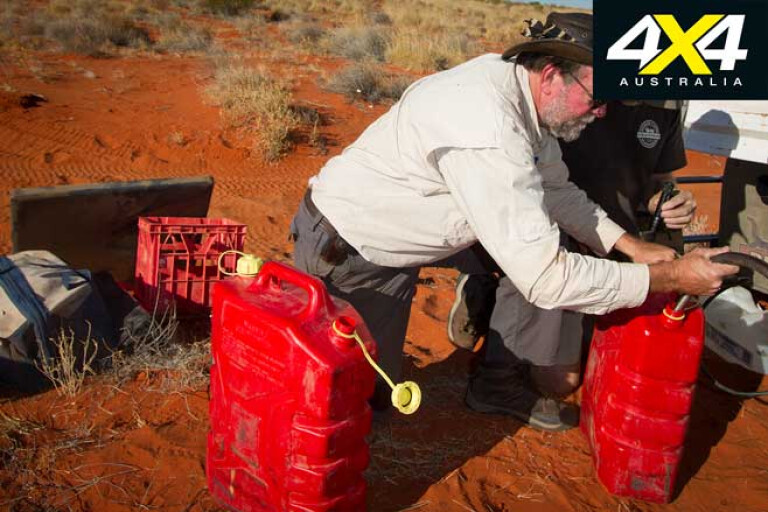
On the afternoon of day five Rick called over the radio, “I need a winch cable on my front left side and I need it now!” We scurried back up the ridge and peered over the edge. Running a diagonal ascent, he had clipped a clump of spinifex, blew a bead on the low-side tyre, and was pitched over near the point of no return. Ben unspooled line off his Warn Zeon 10-S and hooked the front while I ran a safety line to the high side. It was a basic recovery, but the episode could have turned out much worse.
Cresting what felt like the millionth sand ridge, Old Andado Station came into view in the valley below. After a week off the grid, the team was dog-beat tired but ecstatic. Now a state park with bunk rooms, water and showers, Andado holds the historical record of life in pastoral Australia.
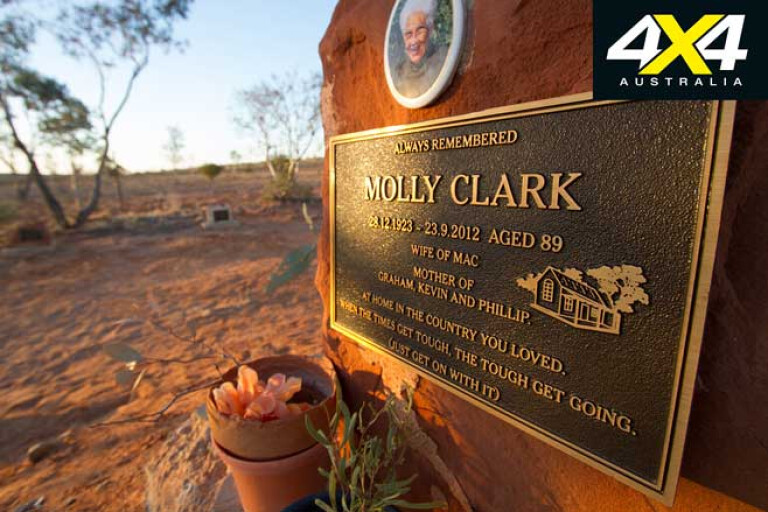
Around the fire that night, Ian and John shared their 1969 encounter with the station’s co-founder, Molly Clark. She was a weathered and hearty character, a pioneer of the Outback who continued to run stock and manage the business long after her husband and sons had passed away. Visiting her grave, we gave thanks for leaving this oasis in the desert, a vestige of Australia’s pioneering spirit.
As prescribed, at our first camp we had burned coolabah leaves, collected the ashes and carried them close at hand. The ritual and offering had apparently appeased the Kudamuckra, as it had let us pass with nary an incident. Gathering around John in a grove of trees near the cemetery, he sprinkled the ashes from their vessel and acknowledged the Kudamuckra’s benevolence. They drifted off on a westerly breeze and we said our adieu to the Simpson.
Palm Trees, Camels and the Indian Ocean
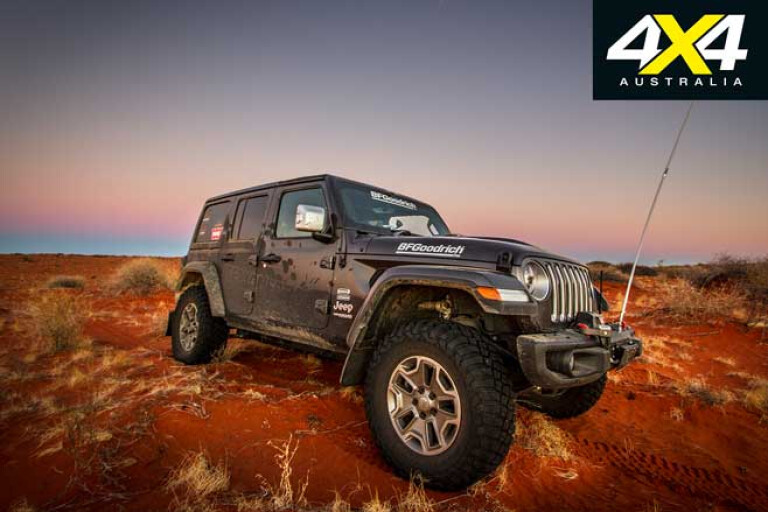
After restocking sundries in Alice Springs, we threaded a path through the verdant chasm of Palm Valley in Finke Gorge National Park, a striking contrast from the arid sands of the Simpson. The days began to meld together once again as we made our way down Boggy Hole Track to Uluru, Kata Tjuta and the Great Central Road (GCR). While the GCR is “great” and “central”, it is unsealed and we would still be on dirt tracks for the next 1500km.
With 2.7 people per square mile, Western Australia (WA) is one of the planet’s least populated regions. One benefit of this emptiness is the complete absence of light pollution. Wandering away from the campfire on any given night revealed dead silence and billions of constellations dancing across an inky blackness.
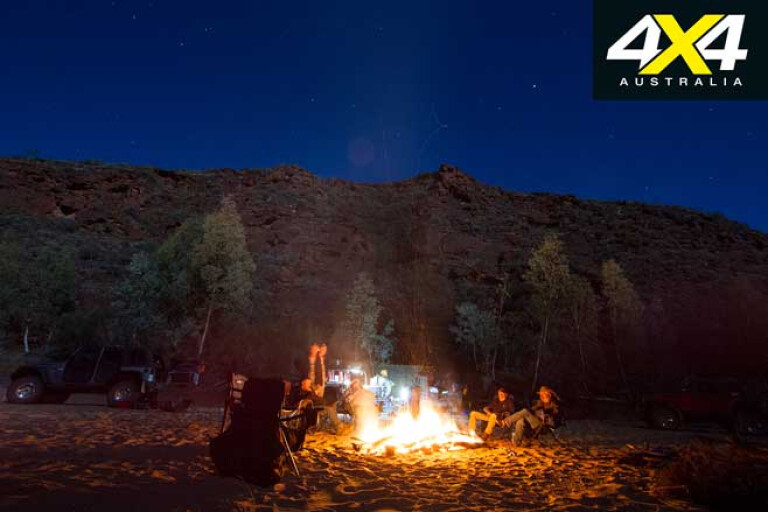
It is no secret that Australia holds the world’s largest camel population – about 1.2 million of the gangly humpbacked dromedaries roam the Outback without discretion. Brought in with Afghan herdsman in the 1800s as pack animals, they were set free when the railroads rendered their services obsolete. They reproduced like rabbits, and we ran into more than our share – figuratively and almost literally. Emerging at dusk and blending into the environment like a grain of sand in the Sahara, they caused more than one emergency braking manoeuvre.
Fuel was no longer a concern, as there are roadhouses every 300km along the GCR. Even at $2.25 per litre, it was always the cheapest fuel in town. Okay, it was the only fuel in town. Tracing a dotted magenta line across the pages of our HEMA Great Desert Tracks Atlas, we passed the Warakurna, Warburto and Tjukayirla roadhouses, the latter of which is the most isolated and lonely roadhouse in the country.

We were slapped in the face by civilisation in Leonora, where the streets were lighted, the surface turned to bitumen and traffic haemorrhaged to more than one car per hour. Turning north on the Coastal Highway, we peeled off at the Overlander Roadhouse and followed a sandy two-track along Shark Bay to the rocky escarpment at land’s end.
John and Ian had headed home from Alice Springs, but we recounted their description of the continent’s westernmost promontory – soft sandy tracks, thick salt brush and precipitous bluffs along the entire coastline. Scanning my surroundings, I realised that, as in the Simpson, not much had changed in the last 50 years.
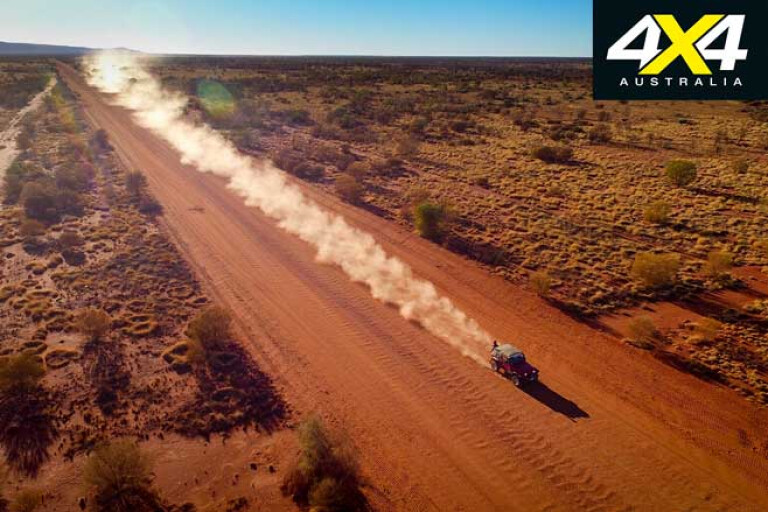
We circled the wagons at the end of the road, Steep Point, in a gusty tempest. Cracking a bottle of scotch, we shared a wee dram in the name of Ian, John and their dedicated team of yesteryear. Rick and I retrieved our bottles of Pacific Ocean water and walked to the edge of the cliff. As we poured the briny liquid into the Indian Ocean, it was uplifted and carried off by an onshore gale like our coolabah ashes over the sands of the Simpson.
It seemed like aeons since I stood alone on that sand ridge, watching my shadow stretch westward and contemplating the forthcoming weeks. We had travelled 6000km through some of the most forgotten expanses of the country and succeeded in our transect of the northern Simpson. As we turned the wheels east, I realised we were merely ashes in the wind, a short paragraph in the 50,000-year narrative of Australia’s compelling past.

COMMENTS